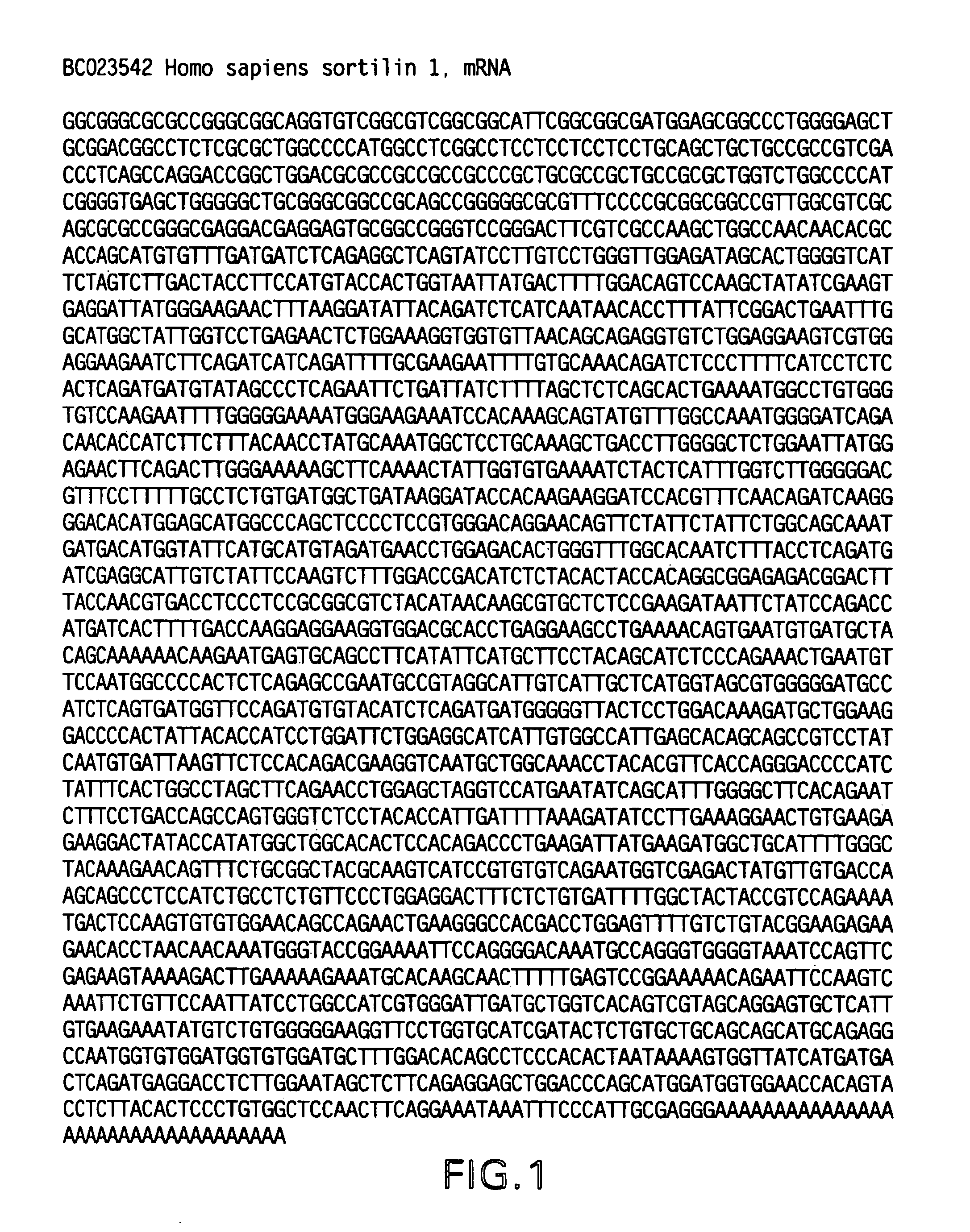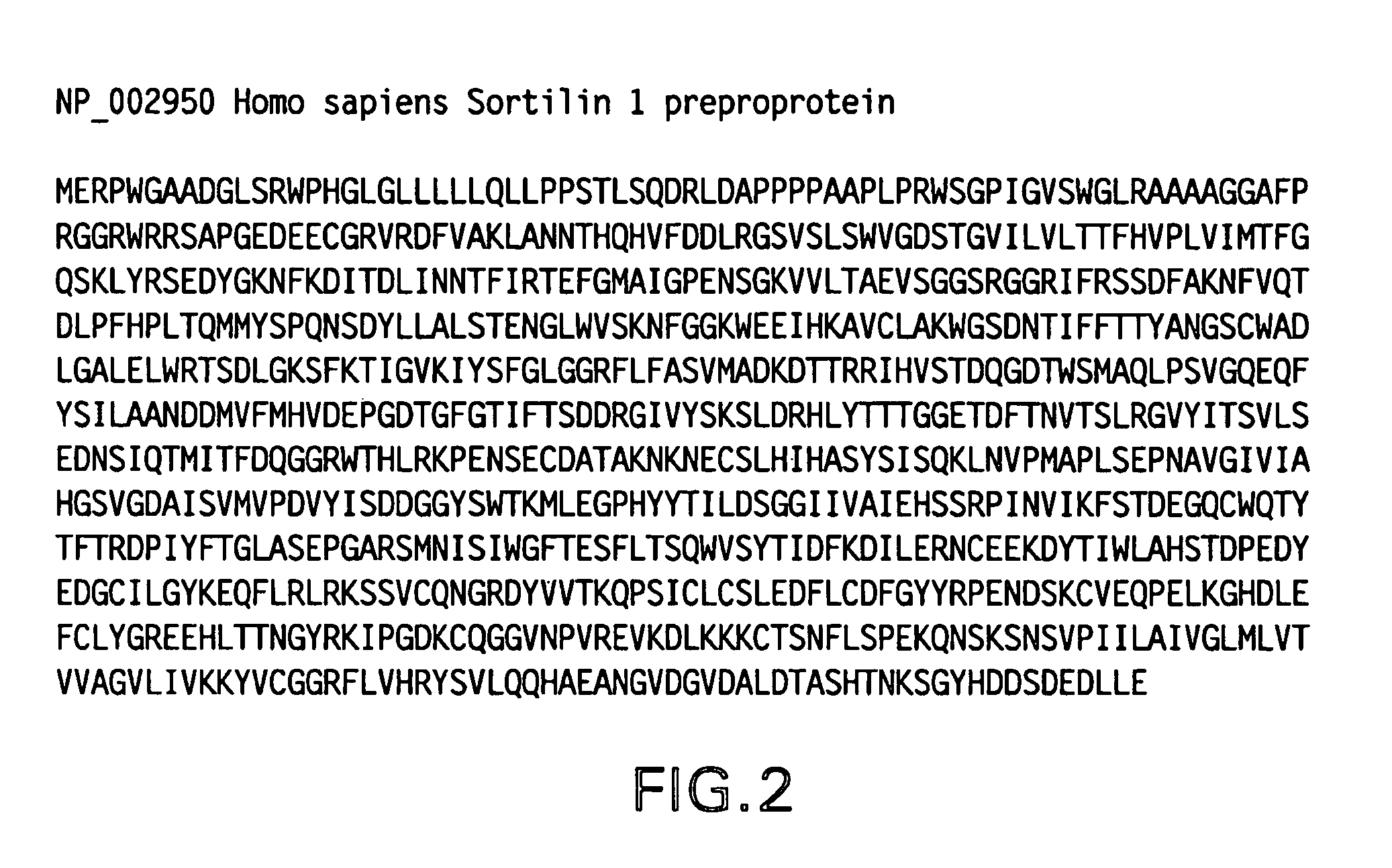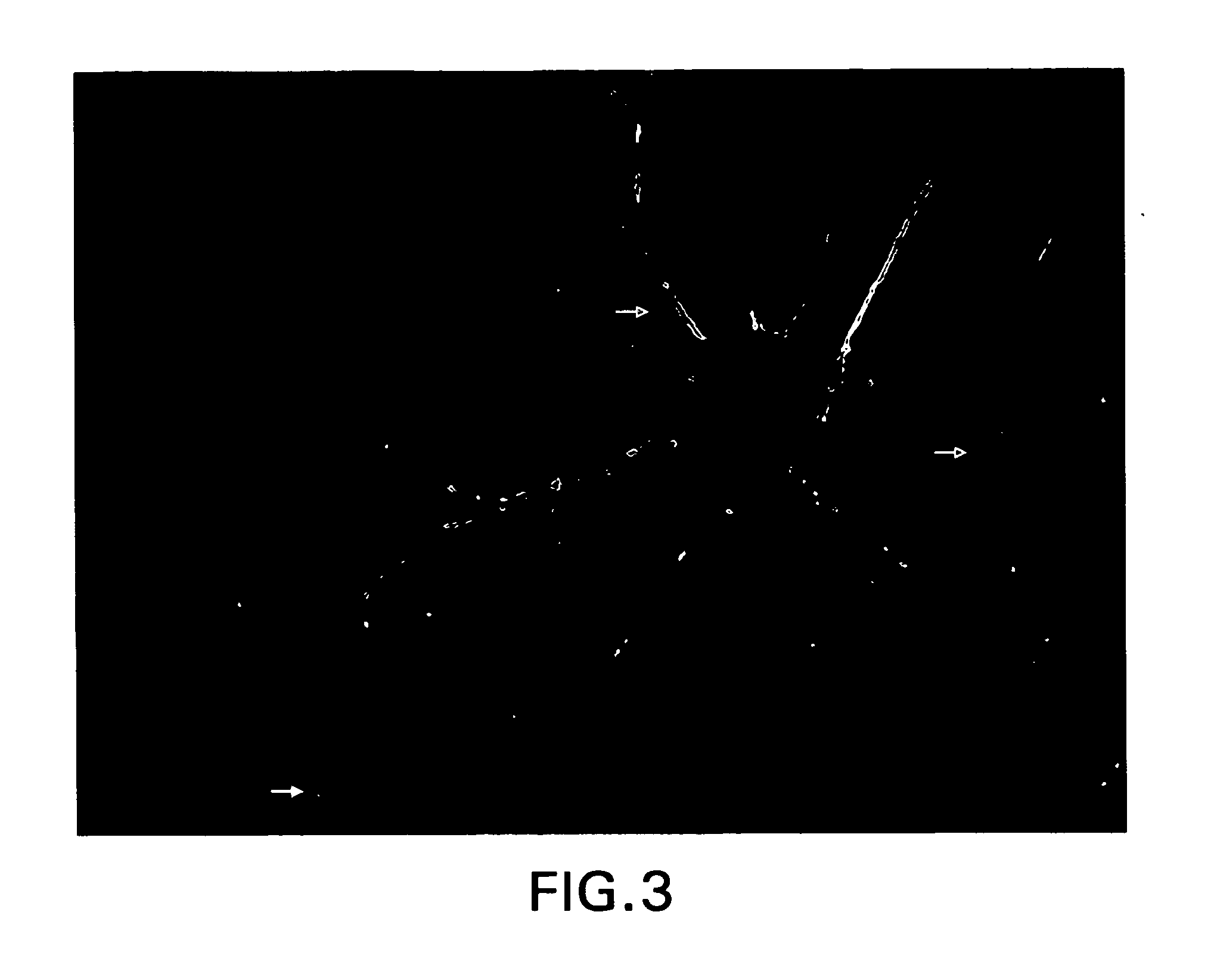Receptor for amyloid beta and uses thereof
- Summary
- Abstract
- Description
- Claims
- Application Information
AI Technical Summary
Benefits of technology
Problems solved by technology
Method used
Image
Examples
example 1
Rat Primary Hippocampal Neuron Immunofluorescence
[0057]Primary hippocampal cultures were prepared from frozen dissociated neonatal rat hippocampal cells (Cambrex, Corp., East Rutherford, N.J.) that were thawed and plated in 96-well plates (Costar, Corning Life Science, Corning N.Y.) at a concentration of 20,000 cells per well (plated at Analytical Biological Services Inc., Wilmington Del.). The cells were maintained in media (Neurobasal without L-glutamine, supplemented with B27, Gibco, Carlsbad, Calif.) for a period of two weeks and then used for binding studies. Primary hippocampal neurons (cultured for 14 days) were incubated with 5-25 μM ADDLs or bADDLs (bADDLs are ADDLs made with biotinylated Aβ42, a modification of methods described in Lambert M P, et al., Proc Natl Acad Sci USA 95(11):6448 (1998)) for one hour at 37° C. and then the cells washed 3-4 times with warm culture media to remove unbound ADDLs or bADDLs. The cells were then fixed with 4% paraformaldehyde solution for...
example 2
Sortilin as ADDL Receptor
[0059]This example describes the identification of sortilin as a receptor for ADDLs. A schematic overview of the experiment is shown in FIG. 4A. Thirty male Spraque Dawley rats were ordered from Taconic Farms (Germantown, N.Y.) for this experiment, weighing between 250 g and 300 g. Rats were sacrificed, the brain was removed and the hippocampus and cerebellum were collected in lysis buffer. Equivalent tissue weights of hippocampi and cerebellum (2.21 g of each) were isolated and homogenized in 10 ml lysis buffer (15 mM NaCl2, 2 mM MgCl2, 10 mM HEPES, 1 mM sodium orthovanidate, and protease inhibitors (Complete tablets, EDTA free). The hippocampus and cerebellum were dounce homogenized for about 25 strokes until the cells were broken and nuclei could be seen in the homogenate microscopically. The homogenate was then spun ten minutes at 1000×g two times to remove nuclei and organelles. The supernatant (supt) was collected and spun at 100,000×g for one hour. Th...
example 3
Immunoprecipitation with bADDLs
[0060]A 6-well tissue culture plate was planted with 500,000 cells / well and transfected with sortilin cDNA the next day using lipofectamine 2000 (Invitrogen, Carlsbad Calif.). The transfection was allowed to go for 48 hours at 37° C. 5% CO2 and the cells were harvested with co-immunoprecipitation buffer (CO—IP) Tris-HCl pH 7.5, NaCl2, NP40, protease inhibitors. Conditioned media from transfection was also collected. Lysate and conditioned media were pre-cleared with SA beads three times for two hours and then 8 μM bADDL 1-40 and 1-42 were added and allowed to bind overnight at 4° C. with rocking. The next day anti-sortilin antibody and protein A beads were added to the tubes and spun down, the beads were washed three times with buffer and the pellet was resuspended in equivalent amount of 2× sample buffer and boiled at 95° C. for five minutes. A 4-20% Tris-HCl Criterion gel was run and transferred, a western was performed with anti-sortilin antibody to...
PUM
| Property | Measurement | Unit |
|---|---|---|
| Cytotoxicity | aaaaa | aaaaa |
Abstract
Description
Claims
Application Information
 Login to View More
Login to View More - R&D
- Intellectual Property
- Life Sciences
- Materials
- Tech Scout
- Unparalleled Data Quality
- Higher Quality Content
- 60% Fewer Hallucinations
Browse by: Latest US Patents, China's latest patents, Technical Efficacy Thesaurus, Application Domain, Technology Topic, Popular Technical Reports.
© 2025 PatSnap. All rights reserved.Legal|Privacy policy|Modern Slavery Act Transparency Statement|Sitemap|About US| Contact US: help@patsnap.com



